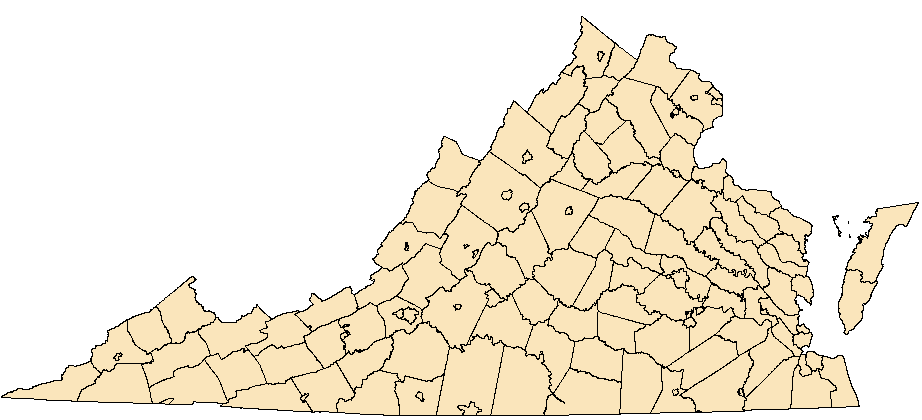Speranza exonerata
Barrens Speranza moth
NatureServe Global Rank: G3G4
Virginia State Rank: S1S3
VA DGIF Tier: None
Federal Legal Status: None
Virginia Legal Status: None
Description: The wingspan is 25 mm. The postmedian line is visible on the forewing of both sexes, but it is not enlarged or darkened at the costa. The underside of the hindwing of both sexes is slightly yellowish and the dorsal side of the hindwing of the female is also slightly yellowish.
Similar species: There are no similar species that occur in its range.
North American Range: Maine to New York, Pennsylvania, New Jersey, Virginia and West Virginia.
VA Observations by Locality: Rockbridge


Flight season and broods: Adults fly from mid-June to early July.
Habitat and Food Plants: Ridgetops and sand plains, in pitch pine-bear oak barrens, on sandy soils, or granite and other rock outcroppings. Bear Oak (Quercus ilicifolia) is thought to be the only food plant of this species.
Behavior and Ecology: This moth is most likely completely nocturnal. Eggs hibernate and larvae feed in spring. It probably pupates and overwinters underground. Adult flight season seems variable but between approximately June 10 and July 20. Flight season is brief, typically about two weeks.
Population trend and potential threats: Only the brief pupal stage might have any protection from fires. Summer fires are a threat.
Management practices: Fire in any other season than that of the pupal stage is thought to be very detrimental to this species, so entire habitats should not be burned all at once, but rather in piecemeal sections.
References: Moth Photographers Group at the Mississippi Entomological Museum at Mississippi State University. Web application at: http://mothphotographersgroup.msstate.edu/large_map.php?hodges=6285.1 Accessed: 20Apr2013
NatureServe. 2012. NatureServe Explorer: An online encyclopedia of life [web application]. Version 7.1. NatureServe, Arlington, Virginia. Available http://www.natureserve.org/explorer. (Accessed: November 12, 2012 ).
Schweitzer, Dale F., Mino, Marc C., Wagner, David L. September 2011. Rare, Declining, and Poorly Known Butterflies and Moths (Lepidoptera) of Forests and Woodlands in the Eastern United States. U.S. Department of Agriculture (USDA). FHTET-2011-01. Pp. 267-269.
Virginia Department of Conservation and Recreation, Natural Heritage Program, 600 E. Main St., 24th Floor, Richmond, VA 23219
This atlas was compiled
by the VA Natural Heritage Program with funds provided by the VA Dept. of Game and Inland Fisheries through a state wildlife grant
from U.S. Fish and Wildlife Service
Questions/Comments? Check the contacts page |
Internet Privacy Policy Statement
Last Modified: Friday, 26 February 2021, 03:21:56 PM